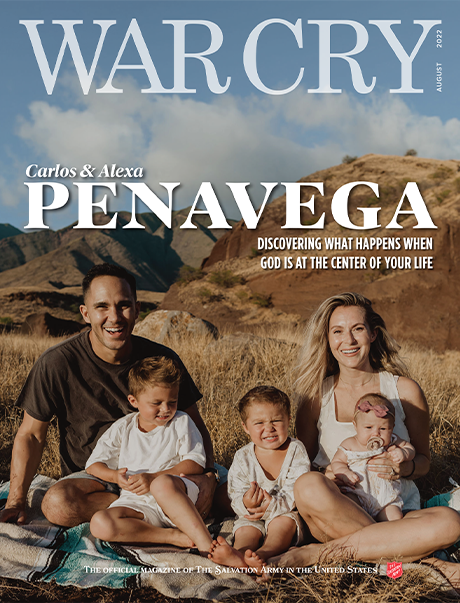Salvationists Serving in Times Of Grief
Major Annette Lock, Major Carolynn Webb and Major Sarah Nelson share about opportunities to serve first responders and family members during the sieges.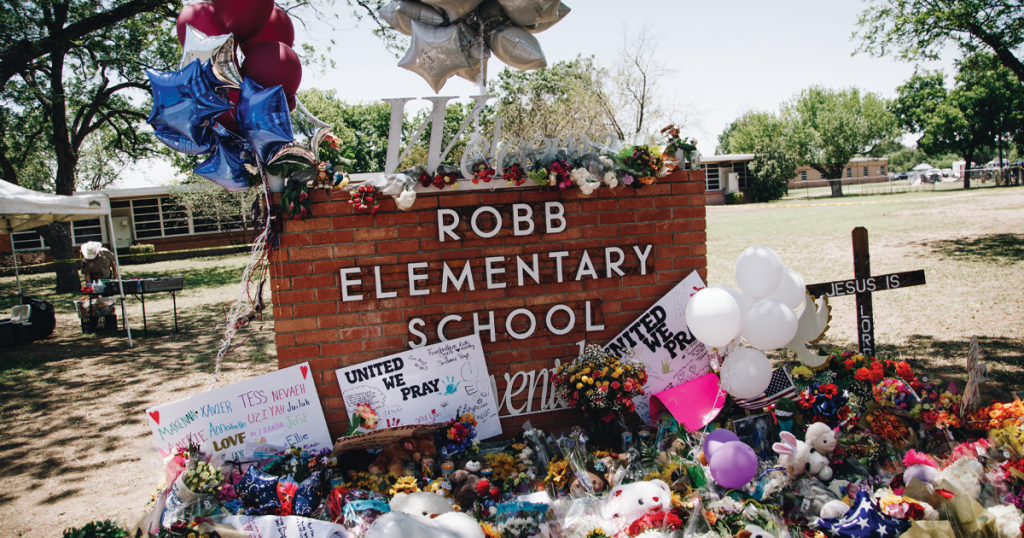
Often when The Salvation Army’s Emergency Disaster Service teams deploy, it is in response to natural disasters, such as hurricanes, tornadoes, floods, and wildfires. There are times, however, when man-made disaster strikes and the Army is requested to serve in unthinkable circumstances, providing physical resources, but, most importantly, emotional and spiritual care in the midst of trauma.
Salvation Army personnel and volunteers were on the scene at three highly publicized mass-casualty events occurring within as many weeks. Buffalo, NY, Uvalde, TX and Tulsa, OK were the scenes of horrific attacks by lone perpetrators resulting in 35 deaths and 20 injuries. EDS teams from the area services center in Buffalo, and area commands in San Antonio and Tulsa, respectively, quickly responded to provide practical assistance, such as hydration and food, as well as emotional and spiritual care.
Major Annette Lock is Erie County director of operations for Buffalo Area Services. She and EDS team leaders Major Carolynn Webb (San Antonio) and Major Sarah Nelson (Tulsa) were interviewed by The War Cry to share about opportunities to serve first responders and family members during the sieges. The following are excerpts from the interviews conducted by Major Frank Duracher.
Please describe what services you offered at the scene.
Major Annette Lock: As soon as our EDS team arrived at the TOPS Supermarket, we began providing emotional and spiritual support for the first afternoon and evening. Two Salvation Army canteens (Buffalo and Jamestown) were present throughout the first week, providing meals and snacks.
The city provided crisis service workers at several locations around the community to help so many who were struggling with what had happened. The Salvation Army committed to providing lunch and dinner to these workers for about three weeks while these mental health counselors were there, helping TOPS employees and people in the neighborhood who were impacted.
It was a very coordinated effort by the community with people and organizations doing whatever they could to fill in the gaps—such as the fact that the TOPS is the only grocery within a large surrounding area, and many are not able to travel far to get what they need. The Salvation Army worked alongside these groups in doing whatever we could to support that effort.
Major Sarah Nelson: Within minutes of the shooting at the Natalie Medical Building (on the campus of St. Francis Hospital), first responders arrived and contacted us. We were asked and were prepared to provide up to 12 hours of service. We provided drinks, snacks, pizza, and emotional/spiritual care. Our canteen was placed at the reunification site, which is normally a high school.
The operation was scaled down to only members of law enforcement by 10 o’clock. Police and hospital representatives thanked us over and over. After everyone was gone, we closed up our canteen. We had a fantastic team that evening. We just made a couple of phone calls, and everyone was quickly in place!
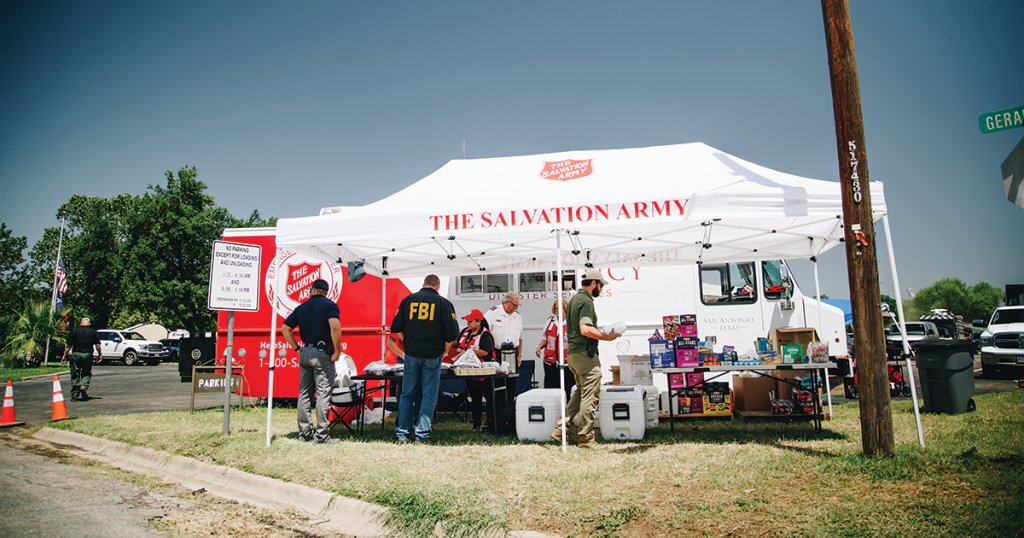
Major Carolynn Webb: We had three separate locations where we worked. The first was at the secure location at the (Robb Elementary) school; The Salvation Army was the only NGO (non-governmental organization) allowed in that area. At this location, we had our canteen; we served mainly the first responders and the immediate homes around the school. We also had the unique opportunity to minister to the employees of the funeral home that was directly across from the school. Once the kids left the school, they evacuated to this funeral home. At this location we served 24 hours a day for the first four days, after that we served 15 hours each day. The services that we provided at this location included food, water, Gatorade, coffee, snacks, and cooling rags.
The second location was at the family assistance center. This center was only for families who lost a loved one or had an injured child. We provided gift cards to HEB, Walmart and a local restaurant. We provided gift cards for restaurants to families that had children in the hospital in San Antonio. We also provided clothes to a family for the funeral of their child.
Our third location was at the civic center, which served as a memorial site, and where many people gathered.
How did you get the alert to respond to the scene?
CW: Within minutes after the shooting began, I started getting phone calls from people asking me if I had heard what was happening in Uvalde. I was under farewell orders, and I was in U-Haul buying boxes so that I could go home and pack. My phone rang—it was a local official calling asking us to come.
SN: We were just finishing dinner at our house, which was just four miles from the hospital. Our phones lit up with messages and when I turned the television on, we saw that already an extensive line of police and ambulance vehicles were there.
Over at the Tulsa Citadel Corps, Major Mark Gilliam was about finished teaching the weekly Bible class. Two soldiers, one of whom works in the medical community, accompanied him to the scene.
AL: John Hagelberger, operations director for Buffalo Area Services, took command that afternoon, and because we happened to be out of town, he quickly notified us of the incident. In turn, my husband and I met with our area corps officers and leadership team on Zoom, and the response to the site was very, very quick—less than two hours after it happened.
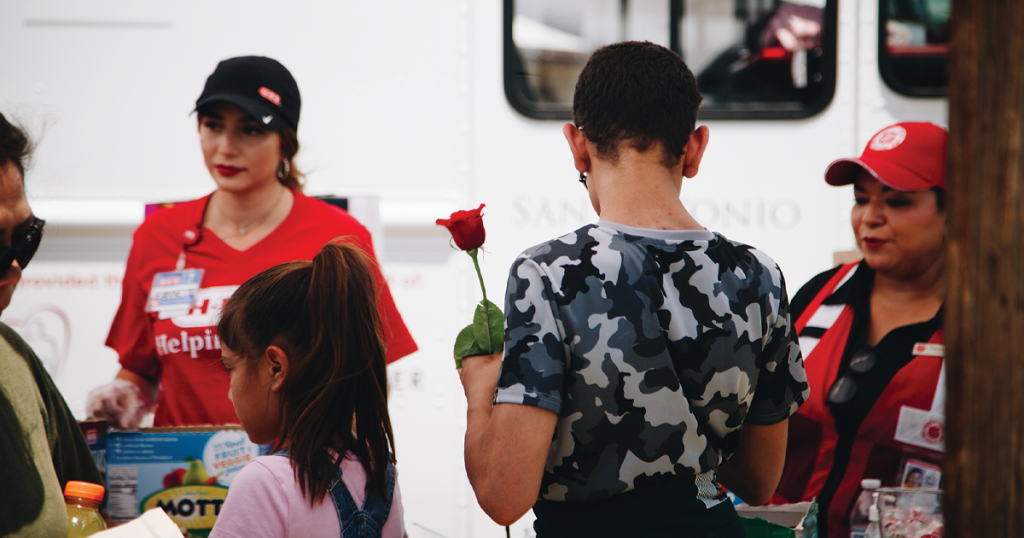
Who were the recipients of your ministry?
SN: It was mostly police and hospital personnel. There were many family members as well since we were at the reunification site. There were so many hurting people that it was sometimes difficult to tell just who first responders were, or hospital personnel, or family members.
AL: We served mostly first responders (Police, FBI, Department of Homeland Security, etc.) but there were very many family members and neighborhood residents there as well, and we served everyone we could.
CW: At the school, we only served first responders. We gave hot meals and hydration donated by area restaurants and supplies from HEB and Walmart. No media were allowed in that restricted area. At the funeral home, we were able to help family members and neighbors (next to the school) and at the family resource center we helped those who had family members who were either injured or deceased. At the Civic Center, we provided emotional and spiritual care.
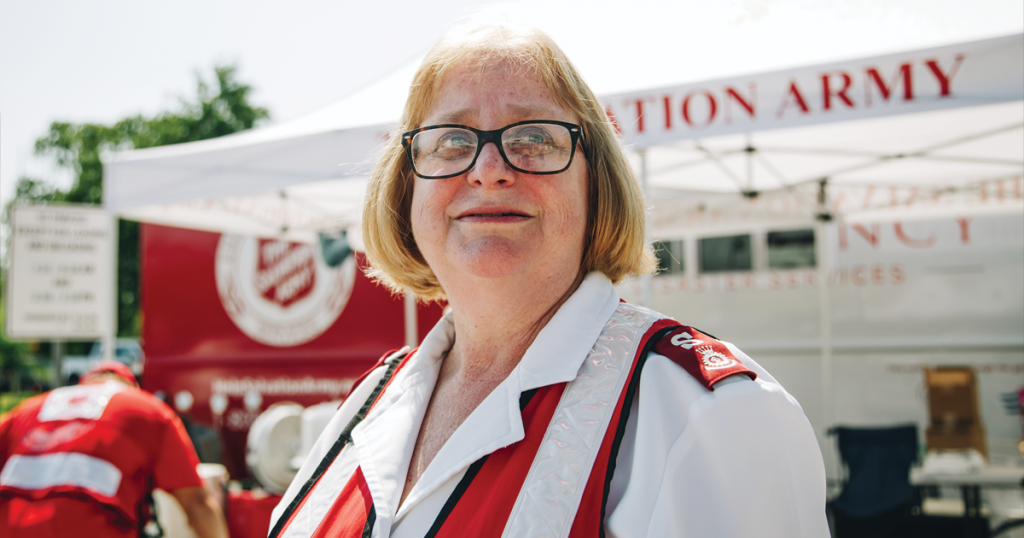
Tell me about one encounter that you will always remember.
AL: We participated in a prayer vigil on the one-month anniversary (June 14). There are so many we know who were greatly impacted, but it was a conversation about trying to handle the anger that is still present and the depth of pain there. The community knows who we are—we’ve been here for nearly 140 years—and we want to continue to come beside people and let them know that we love them, stand beside them, and that we are broken-hearted.
CW: There is a lady who lives across the street from the school; in fact, her fence borders the property and was damaged during all that happened. This lady was outside at the time and witnessed the whole thing—the vehicle crash, the shooting (outside at funeral home employees) and the commotion for the next few harrowing hours. For the first three nights she got no sleep. We forged a great relationship with her and on that third day I went into her house and sat by her bedside while she took a nap for a few hours. That was the only way she could get any sleep!
SN: I stopped by a pizza place to buy 20 pies. Then as I was driving to the site, I was agonizing over what I would find; what to expect. What would we do? How would we do it? It was then that the Holy Spirit spoke to me and reminded me of what is written on the back of many of our Salvation Army canteens—“Hope Is On The Way.” It was at that moment I realized that although my EDS team was just arriving to set up and begin ministering—God was already there. Hope had already arrived!
Is there another encounter you would prefer to forget?
SN: Our EDS was at the reunification site the entire time. This all happened in a moment. Lives were changed. Lives were lost. There was a very heavy aura of gloom over the place.
CW: I will never forget the look on the faces of all the family members. They were glazed over in disbelief and grief. I will also never forget the extensive line of hearses queued up to take the deceased away. It was so sad.
AL: Emotions were so high, raw, intense, and fragile. Mostly people were very appreciative of what we all were doing there, but our team allowed them to vent if they needed to. Sometimes it was pretty tough on our officers.
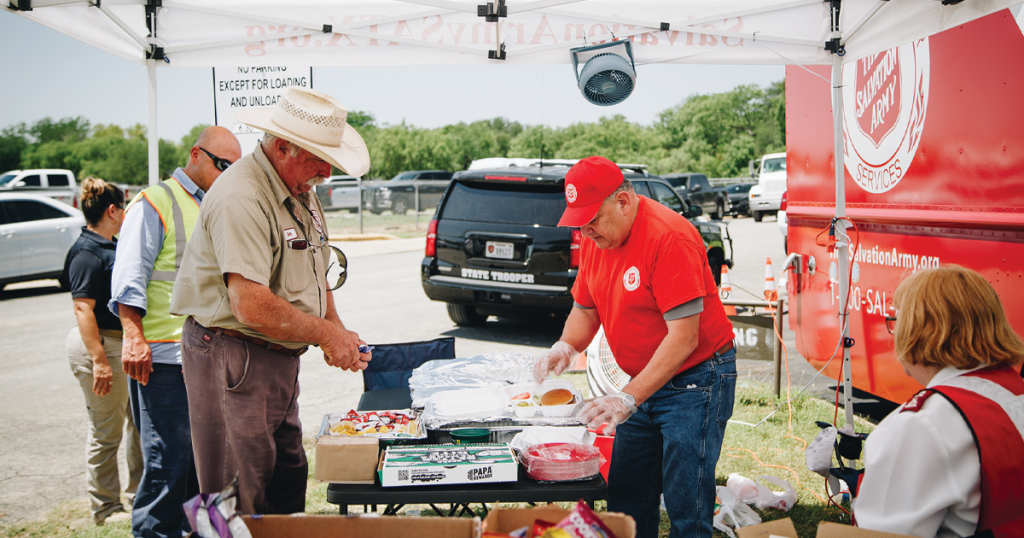
Is there something you wish you could have done but were not able to?
CW: I wish I could have hugged all of the family members we served at both the funeral home and the civic center—there were just so many people, it was impossible.
AL: You are never prepared for something like this. Ideally, we would respond very quickly when the event happens. When a crisis happens, not everything is prepared or as thought out as it could be, but I’m very proud of our Army responding quickly and lovingly to this specific challenge. It’s very important for us to coordinate and work with others in the community. We can’t do this alone.
SN: I wish I had some kind of time machine so that not only could we have gotten there within seconds of the shooting, but that we could do so much more for those around us that were, and still are, hurting so badly.
Were you able to pray with others?
AL: In addition to our team of officers and EDS staff, Envoy Jon Soza brought his team of soldiers and EDS volunteers from the Rochester Area Services (Liberty Pole Way Corps). Our people were incredible in listening and praying with so many individuals whose emotions are very raw and the hurt that remains fresh.
SN: The final person who made a very deliberate effort to express appreciation to us is a high-ranking member of the Board of Directors at St. Francis. It was sometimes difficult to decipher who were police and who were hospital personnel, so I asked him a few questions to understand how that day’s events related to him, to which he ultimately said, “It is all just so sad. They are like family.” He was visibly shaken. It turns out he had a personal relationship with each of the four victims who were killed. He stayed at the reunification site to support hospital staff/families and did not leave until they had all gone home. By the time we encountered him, he was clearly depleted of emotional and physical energy. Four of us (two officers and two volunteers) huddled around him and his wife to pray. I placed my hand on his back and felt him trembling. He was navigating the unthinkable. I sensed he hesitated to go home, anticipating the night would usher in an excruciating darkness. He needs ongoing prayer.
CW: We prayed with countless people and listened to countless stories of their experiences of that day. The most important service we provided was at the funeral home. The funeral home people asked families if they would like to have someone pray with them. The families that did were referred to us and we were able to give emotional and spiritual help. Each of those were sacred moments.
Describe the community now that a fair amount of time has passed.
SN: There is still a huge sense of grief here in Tulsa. There is an infamous list of cities and towns where this sort of thing has happened, and normally you would think, ‘Oh that’ll never happen here!’ but then, it does.
CW: The mood in Uvalde is very somber yet hopeful.
AL: People are tired, apprehensive, and scared. They want their neighborhoods to be safe. This event was very personal to them. Very real.
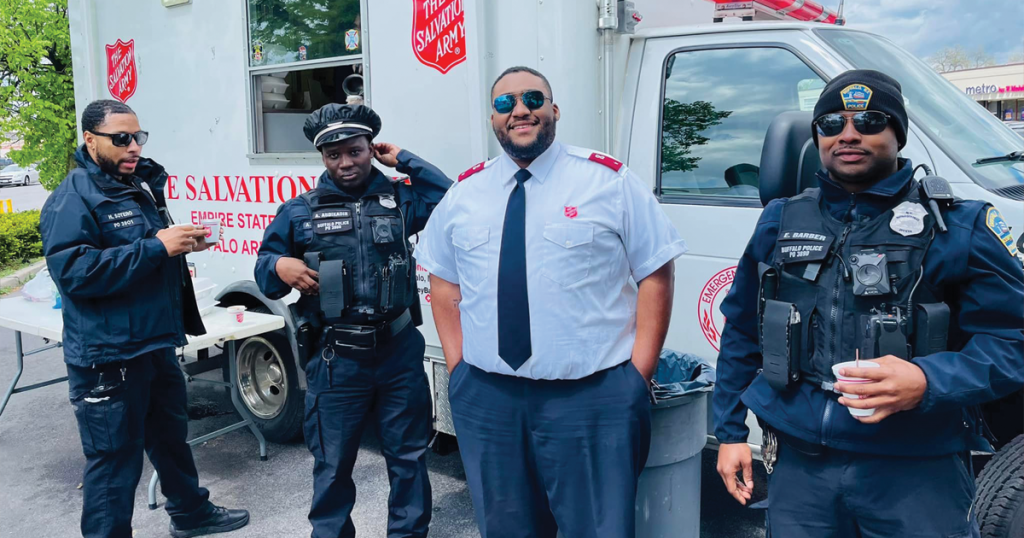
Is there anything you would like to add?
CW: I am very proud of our team that responded to Uvalde. They served through very difficult situations. But their faith never wavered, and they shared their faith with those they came in contact with.
AL: We covet continued prayers for our city, and for the Army as we minister to the needs of so many who were affected by this tragedy.
SN: I have not seen the aftermath of this type of situation up-close before. It was sobering. But I recognized moments when God’s presence cut through the chaos. The Holy Spirit was present before our team arrived. His help is not just “on the way”—it’s here. It’s already happening. I pray others will see that too as our community continues to process this tragedy.







